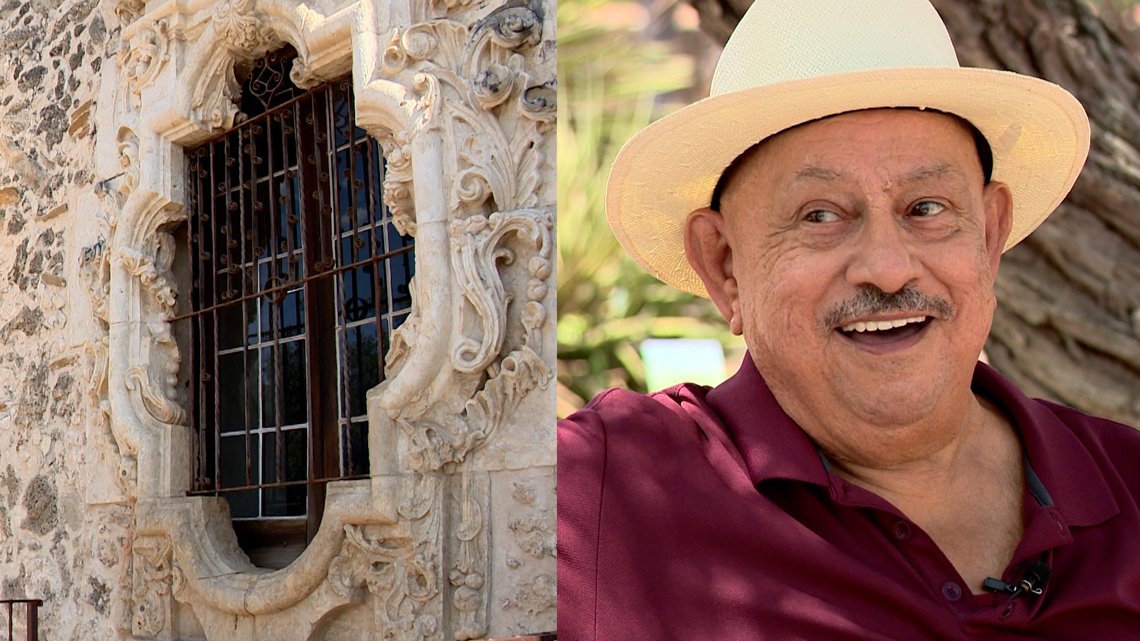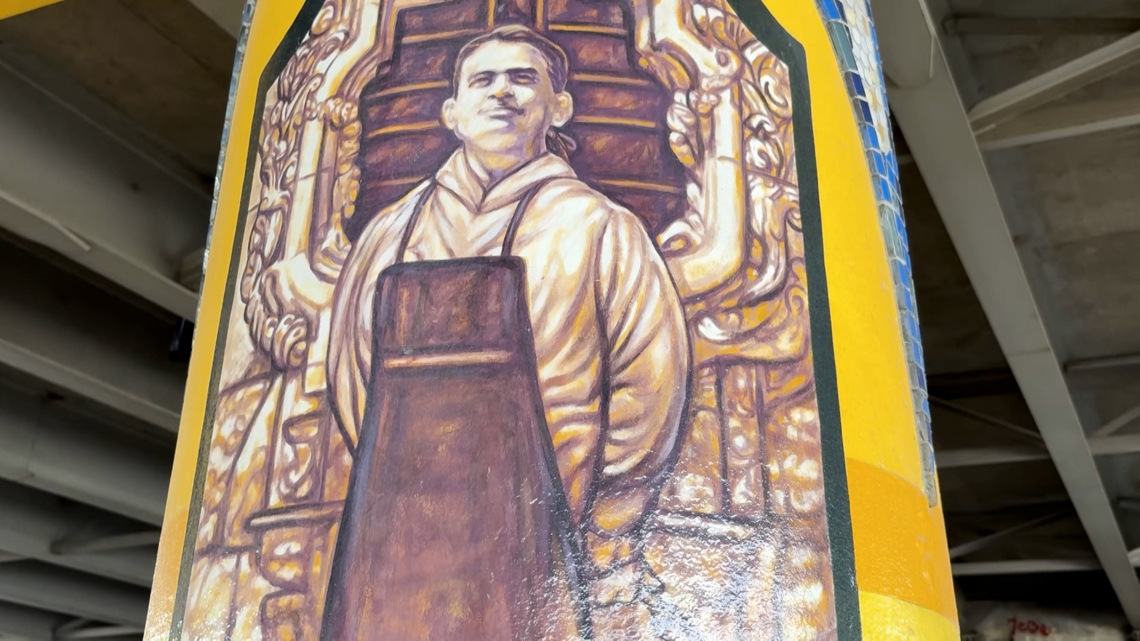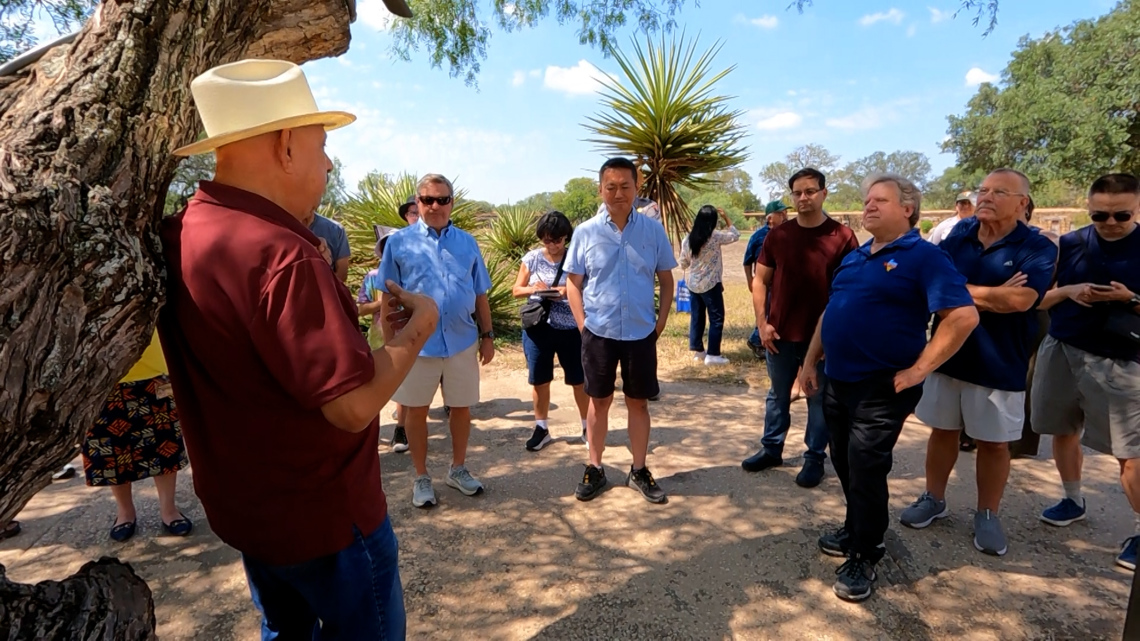Vincent Huizar, a descendant of the man credited with Mission San José’s iconic Rose Window, now guides tours on the very grounds where his ancestor carved history.
SAN ANTONIO — As San Antonio’s Missions celebrate 10 years as a UNESCO World Heritage Site, one family’s story shows that history isn’t only preserved in stone — it’s carried in the heart.
At Mission San José, 74-year-old Vincent Huizar shares more than dates and details with visitors. His connection runs so deep that for years he tended the mission cemetery because, to put it simply, he knows a few people buried there.
Discovering a Family Legacy
Vincent grew up hearing only fragments of his ancestry. “She told me one day a couple of times, ‘Your dad always said you are part of the Missions and a window that’s there,’” he recalled of a conversation with his mother. But she never specified which mission or which window.
That mystery launched years of research. “I had to put everything together before I started saying anything,” Vincent said. His search revealed that the “window” was the world-famous Rose Window and that his ancestor, Don Pedro Huizar, is also believed to have designed the elaborate façade of the church.


The Master Builder
According to the Texas State Historical Association, Pedro Huizar was born in Aguascalientes, Mexico, in 1740. Huizar descendants say later in life Pedro traveled to Spain and apprenticed under skilled sculptors. In late 1774, he traveled alone to the New World, leaving behind his sweetheart, Rosa.
San José itself had been established in 1720. The Rose Window was sculpted in 1775. Huizar kept carving ornate details long after, using wood-carving tools rather than a master mason’s kit, descendants say. The strong influence of Spanish Baroque is visible in every flourish, including the intricate Rose Window on the south side of the sacristy.
Two theories persist about the window’s name: that it memorializes Rosa, who tragically died in a shipwreck while attempting to join him, or that it honors Saint Rose of Lima, the first saint of the New World. Either way, the Rose Window is considered the finest example of Spanish colonial ornamentation in the United States and is one of Texas’ most photographed treasures, second only to the Alamo.
“He wasn’t a master mason, he was a master carpintero,” Vincent said.


Huizar’s accomplishments went beyond the Rose Window. Pedro’s surveying work earned him land at Mission San José, Mission Concepción and Mission San Antonio de Valero — better known as the Alamo. Huizar owned much of the property in present-day King William. He fathered eight children and is believed by descendants to have been laid to rest in the church sacristy behind the Rose Window.
Pride in the Present
For Vincent, uncovering this legacy brought a profound sense of belonging. “It made me feel like I belonged here,” he said. “Don’t wait for anybody to tell your story. You need to tell your own story.”
Every Huizar, he adds, carries a bit of that craftsmanship: “If you’re a Huizar descendant, it’s in your blood.”
Vincent now volunteers as a tour guide, making sure visitors don’t just see the stone, but feel the hands that shaped it.
Visitors Inspired
Guests say the experience is unforgettable.
“To also be able to come here and hear the story from someone from the family — it’s so exciting,” said visitor Melissa Tarun. “I’m embarrassed to say I’ve been living in San Antonio on and off since I was 16 and I didn’t visit the Missions until this year. I am a sucker for a romantic story.”
Andrew Gomez added, “It’s one of the interesting things about San Antonio, how many families can go back to the Mission age and recount their history for more than 300 years. You always want to know your history and your heritage.”
Deborah Lund McFarlane, a docent with the Institute of Texan Cultures and the Alamo, said, “People who visit from all over the world are coming to see these UNESCO World Heritage sites. They want to know about our culture. They want to see somebody who identifies, like Mr. Huizar.”


Living Heritage
City leaders and Pedro Huizar’s family dedicated the Don Pedro Huizar Garden on Jan. 13, 2012. The small park at the intersection of Cesar Chavez and South St. Mary’s Street was donated to the city by the San Antonio Conservation Society in 1978.
For Vincent, sharing his ancestor’s story is more than preserving a landmark; it’s echoing the voices of his ancestors. And for the Huizar family, that heritage isn’t just remembered — it’s alive every time a visitor stands before the Rose Window.
Mission San José, known as the Queen of the Missions, remains a testament to the artistry and devotion of Don Pedro Huizar, whose legacy still thrives through the pride and passion of his descendants.
